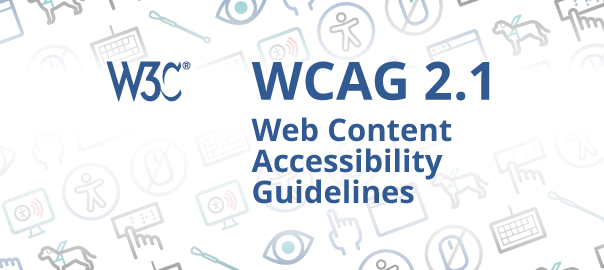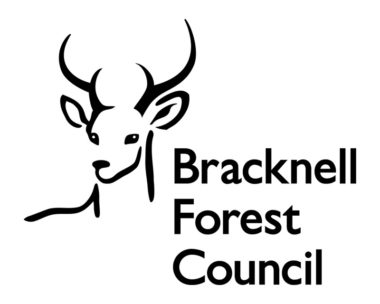The Web Content Accessibility Guidelines, commonly referred to as WCAG, are a set of standards that are developed internationally by the World Wide Web Consortium (W3C) in order to create a set of guidelines that are regarded across the world as the recognised set of accessibility standards.
Beginning in 1999 with WCAG 1.0, the standards have been updated every so often to keep up to date with technological advancements and research into cognitive impairments and disabilities. In 2008, WCAG 2.0 was published, which completely overhauled the initial set of standards. In June 2018, W3C released an updated version of 2.0, aptly named WCAG 2.1.
Check if you’re meeting accessibility standards, apply for your Free Accessibility Snapshot
What is the difference between WCAG 2.0 and WCAG 2.1?
WCAG 2.1 was released in June 2018, ten years after the original 2.0 guidelines. The reason being is that with an increased understanding of cognitive impairments and low vision, comes a slightly revised level of standards that is better tailored to those with low vision and cognitive impairments.
Another major addition in WCAG 2.1 is the inclusion of accessibility on mobile devices, as you can imagine, a lot has changed since 2008, mobile phones have become far more technological since WCAG 2.0, so revisions needed to be made in order for the standards to remain up-to-date.
What has changed in WCAG 2.1?
If you aren’t aware of what was in the initial 2.0 standards, we have a blog that outlines a simple guide to WCAG 2.0. WCAG 2.1 has added the additional points to the standard:
Perceivable:
- 3.4 Orientation – Websites support landscape and portrait display.
- 3.5 Identity Input Purpose – Determine what a user is expected to enter into a form field.
- 3.6 Identify Purpose – HTML code should provide context, purpose and meaning to symbols, buttons, links and fields.
- 4.10 Reflow – Users on mobiles should not be scrolling horizontally, make a mobile responsive site.
- 4.11 Non-Text Contrast – Buttons and infographics (other interface components and non-text content) must have a ratio of 3:1.
- 4.12 Text Spacing – Users must be able to increase the distance between paragraphs, rows, words, and characters without losing content or functionality.
- 4.13 Content on Hover – Details on how users can dismiss hover content.
Operable:
- 1.4 Character Key Shortcuts – The customisation of key shortcuts.
- 2.6 Timeouts – Users are informed of a period of inactivity that could lead to data loss.
- 3.3 Animation from Interactions – Users can turn off animation unless it is instrumental to the way the website/application operates.
- 5.1 Pointer Gestures – Complex actions such as zooming can be done through simpler actions like pointing and clicking.
- Pointer Cancellation – Allows users to recover from ‘hitting the wrong target’ on a click.
- 5.3 Label in Name – The visible text of a label in a User Interface component must match an accessible name or programmatic label.
- 5.4 Motion Actuation – Actions that can be done (ex. Shaking a phone to ‘undo text’) must also be implemented by a user interface component.
- 5.5 Target Size – A clickable element must be at least 44 by 44 CSS pixels apart (exceptions do apply).
- 5.6 Concurrent Input Mechanisms – Users should be able to switch input methods from keyboard to mouse, etc.
Understandable:
- No changes.
Robust:
- 1.3 Status Messages – If new content is added to a page, the users of assistive technologies must be alerted without interrupting their work.
Do I need to be compliant to WCAG 2.1?
We like to think of WCAG as like an iPhone or a computer, upgrading from WCAG 2.0 to WCAG 2.1 does not change the overall structure, but they’ve added new features for a more inclusive experience, so it’s not difficult to become compliant.
Legally speaking, no, you are not required to meet the specifications of WCAG 2.1. Whilst this may put your mind at rest, it doesn’t mean that a law can’t be amended to turn the requirement into WCAG 2.1 rather than 2.0. At the moment, most accessibility laws are written for people to comply with WCAG 2.0, which is why we focus on that as accessibility assessors.
In Summary
At Shaw Trust Accessibility Services, we fully support the revision of the WCAG standards, it brings the standards into the modern day and allows for mobile handsets, which makes up more than half the internet traffic worldwide, to become a part of accessibility. It will be interesting to see whether any accessibility regulations or laws will be altered to reflect the WCAG 2.1 additions, but this is unclear.
Becoming accessible to WCAG 2.1 will not be a challenging feat if you are already compliant with WCAG 2.0. We ensure that each website is tested to WCAG 2.0, however, we are able to test If you would like to discuss this in more details, please do not hesitate to get in touch with us.
Further Reading
If you’d like to learn more about accessibility and gain a better understanding of some of the terms commonly used then we’ve created a series of blogs just for you. Simply click on the post titles below;







